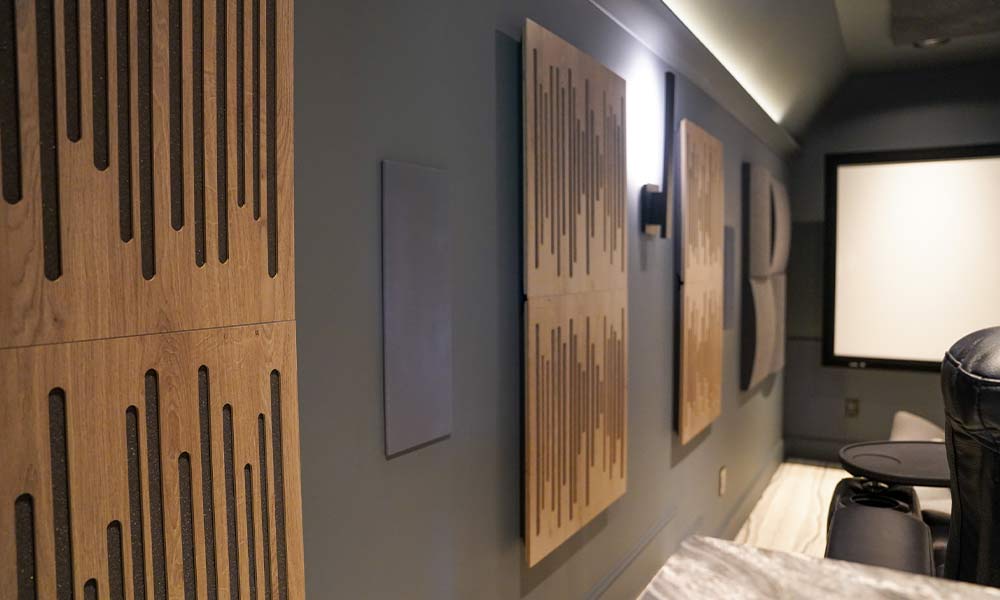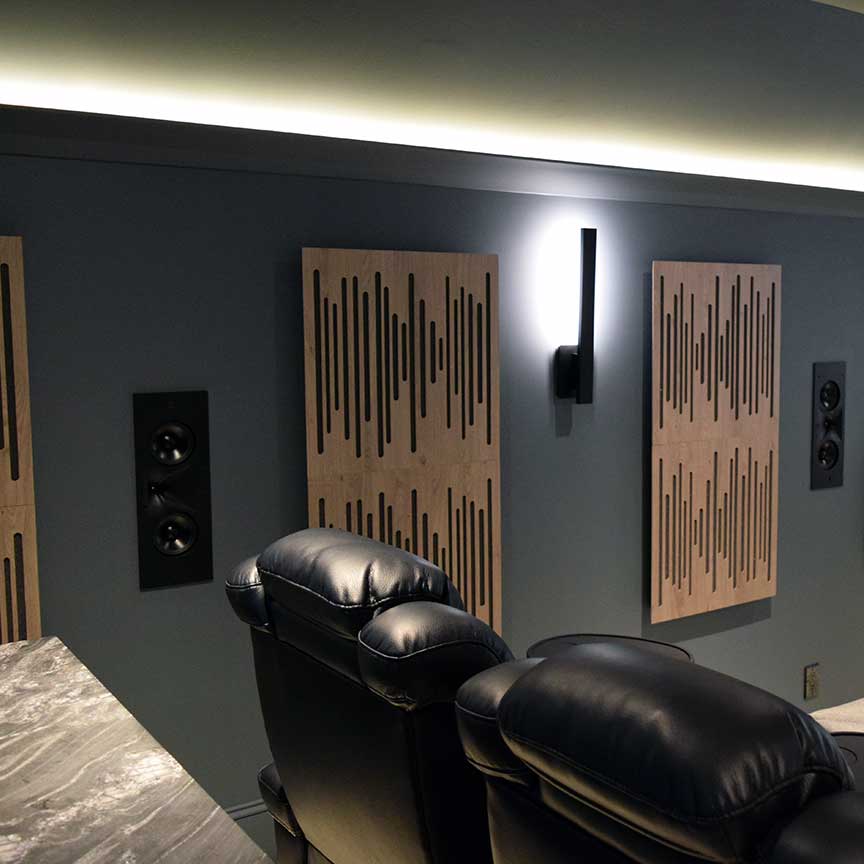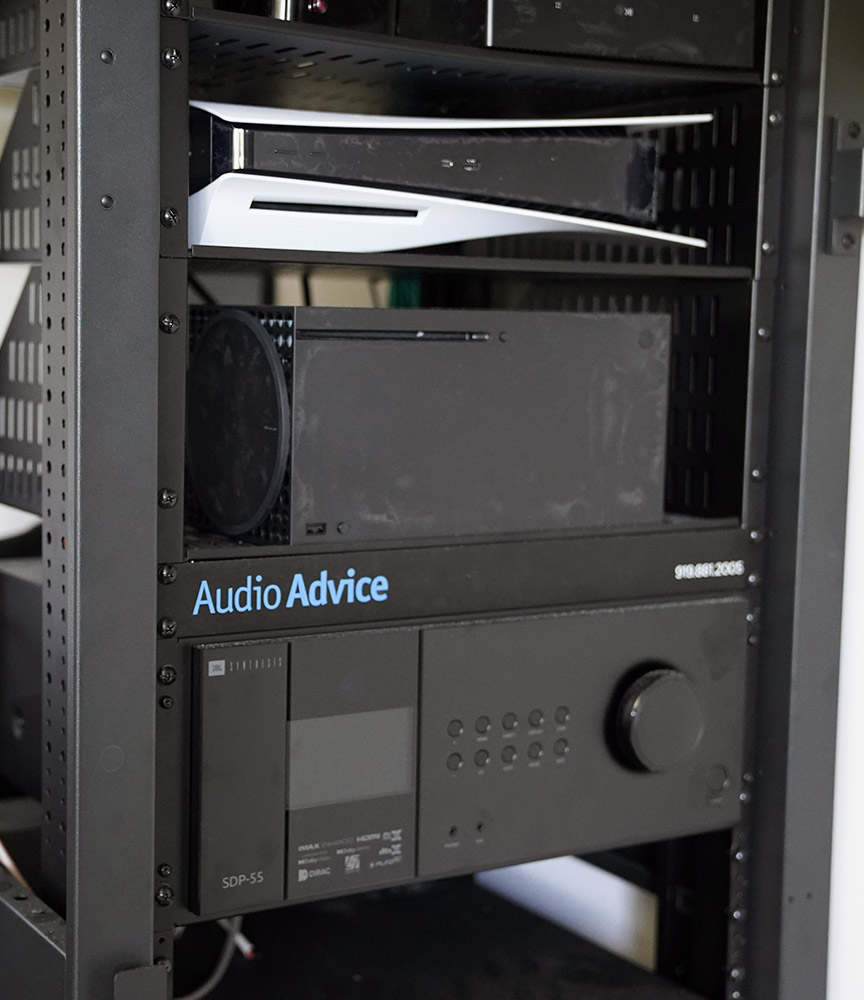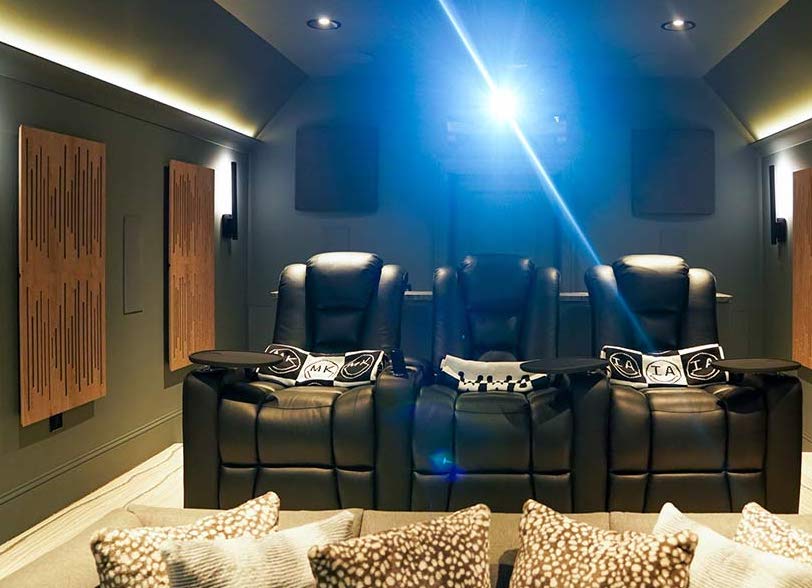At Audio Advice, one of the United States’ largest sellers of home theaters, every step of the process from system design and product selection to installation and use involves detailed planning and customization to suit each project’s unique needs and goals. As CEO Scott Newnam puts it, the company is “fanatical about high performance AV,” which is why they recommend Dirac’s room correction solutions to their clients, including in professional-grade home theater project featuring a Dirac Live-optimized 9.4.4 JBL Synthesis Dolby Atmos audio system.
“Every home theater we build is designed to deliver the best possible experience for the client regardless of their chosen space or surroundings,” Newnam said, “and whether they realize it or not, one of the biggest factors affecting sound quality in any home audio system is the room itself. This installation is a great example because the client was thrilled with the audio system the first time we turned it on, but he was absolutely blown away after watching us perform the Dirac Live Room Correction and Dirac Live Bass Control optimizations and hearing the difference for himself.”

Many clients who work with Audio Advice start the process by using the company’s patented Home Theater Designer, an easy-to-use virtual room design tool found at AudioAdvice.com that allows potential customers to quickly create a mockup of their room. With just a few clicks and swipes, users can adjust speakers, projectors and seating to see how their theater would look and feel, with differing experiences resulting from floor standing, in-wall or behind-screen speakers, for example. Subsequent consultations with Audio Advice experts help fine tune the system’s attributes, components, appearance, sophistication, and cost to ensure complete satisfaction.
Still, Newnam’s client explained that there is a difference between designing a great home theater and one that optimizes the full potential of home theater audio performance.

“As a repeat customer with Audio Advice, I knew I could trust their expertise and dedication to achieving my goals,” the homeowner said. “What I didn’t know was that at the very end of the process, when everything looked finished, and I was already excited about how good everything sounded, they would use this calibration software that somehow made my system sound even more clear, balanced, and lifelike than it did before. Scott (Newnam) said it already, but I really was blown away. There was this ‘Aha!’ moment where I realized that the unseen elements of a home theater, including software like Dirac’s calibration tools, are just as important as the speakers, projector and seating.”
The JBL Synthesis SDP58 processor includes Dirac Live Room Correction and Dirac Live Bass Control, both of which leverage patented algorithms to measure and correct the acoustic issues caused by a room’s shape, size, seating locations and other characteristics.

Dirac Live Bass Control intelligently co-optimizes a system’s subwoofers and speakers to deliver consistent and accurate bass throughout an entire room. It ensures smoother bass in the crossover region between subs and speakers and is available for single and multi-subwoofer setups.
Dirac Live Room Correction, the company’s original room acoustics software, corrects for both the magnitude and phase of the entire sound system, including the room itself — resulting in more transparent, balanced sound, tighter bass, improved staging, and enhanced clarity.
The result is an enveloping theater that succeeds in transporting the family from the reality of a rebuilt room above a garage into their favorite cinematic universes where every sight and sound is presented as intended, free from distortion, reflections, or resonances.

Newnam said this theater represents Audio Advice’s mantra of exceeding expectations and delivering unrivaled spaces. The performance boosts achieved through Dirac’s various room optimization tools play a pivotal role in helping the company deliver the best possible experience for every client, which is why they carry products across the budget spectrum that include Dirac software. In fact, the company is so sure of the software’s value and ability to improve sound quality, that it has even created tutorial videos to help other integrators and individuals calibrate their own systems.
“We want to be known as the most knowledgeable home theater company, and that means we have to share our knowledge with whoever wants it,” Newnam added. “Our room configurator tool is free, and we know that some of our competitors have even used it with their clients for early design discussions. By producing videos that show the full design and build progression of a theater, or the calibration process and effects of Dirac’s optimization software, we hope to advance the industry and help everyone maximize their spaces, no matter who a customer works with.”
The company also sells Dirac-enabled components direct to consumers on its website and assists with installation by remotely logging in to guide the room correction process. Newnam was also quick to add that Dirac has improved and expanded its capabilities a lot in a short time frame, noting that integrators may want to take a second look at the technology if they haven’t tried it in a few years.
“If you’re a pro who tried a Dirac solution five years ago, or 10 years ago, it’s time to try it again,” he said. “The AI and machine learning elements that take the room’s unique characteristics into account are a game changer for sound optimization.”
The amazing final result is a testament to the company’s dedication and expertise, as seen in this video walkthrough that demonstrates the entire project from initial 3D design to completion.
Related: Dirac’s Mathias Johansson on RP22 and the Challenges of Multiple Subwoofer Room Designs








